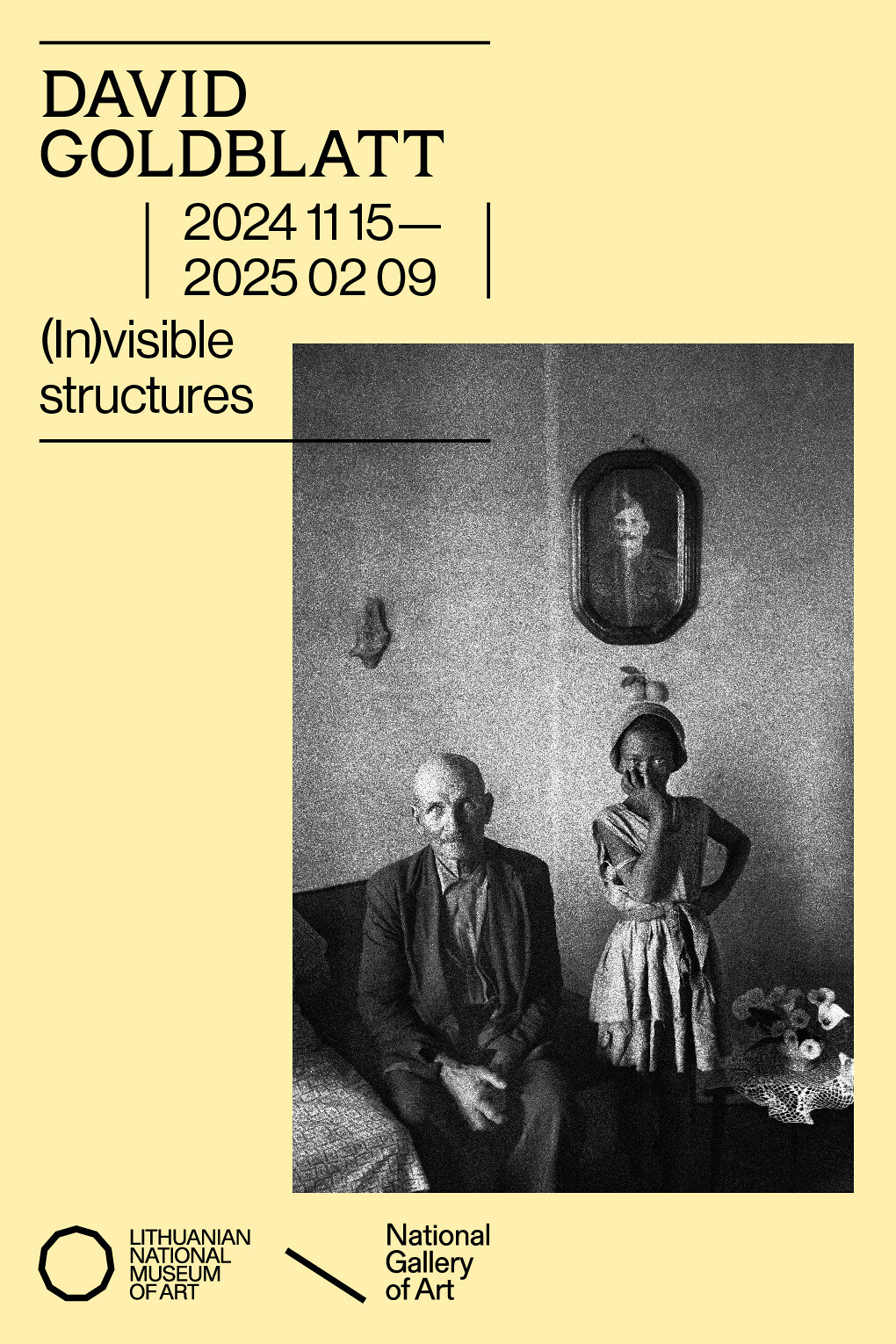Subjectivity and Automation
The history of the last fifty years can be read from the point of view of the relation between subjectivity and automation, the replacement of a living process by a technological artifact whose performances replicate the logical and functional succession of human acts. In the history of capitalism, this replacement has a double goal: increasing workers’ productivity and subduing the political force of organized workers.
In the last decades of the century, the digital network became the engine of the increase in productivity in every branch of social production. The worldwide movement of students that culminated in the year 1968 can be viewed as the moment of anticipation and early emergence of this new social potency: students are the living embodiment of the general intellect, and the antiauthoritarian movements were the beginning of a long-lasting conflict between cognitive workers and capital.
The process of automation has not only replaced the physical acts of production: following the introduction of information technology, automation has massively transformed cognitive activity itself. The capture and subsumption of cognitive activity is the basic condition of semiocapital, which is based on the valorization and accumulation of signs (semia) as economic assets. In order to capture cognitive activity (attention, memory, language, imagination), semiocapital must insert automatic procedures into the field of cognition itself. Therefore, automation is not only the effect of the cognitive action that leads to the change of work organization; it also implies the reduction of cognitive activity to algorithmic procedures, and the insertion of automatisms into the social existence of the general intellect.
This process poses a major threat to the autonomy of subjectivation: language, memory, and imagination are more and more performed by machines, and the human learning process is more and more pervaded by the automated process of enunciation.
Determinism
Determinism is a philosophical theory based on the assumption that every physical event can be reduced to a chain of causation. In the last century the determinist vision has simultaneously gained and lost ground.
It has gained ground thanks to the refinement of tools for microphysical investigation, and the discovery of highly complicated patterns of causation and determination in the field of biogenomics. But it has lost ground both in physics and in biology since Heisenberg’s uncertainty principle blurred the link between physical phenomena and the observer.
In the last decade of the twentieth century, the Human Genome Project was founded on the assumption that genes determine an organism’s life, just as a code enables a message’s interpretation. This deterministic reduction was particularly at work in the conceptualization of the Human Genome Project, based on the idea that the deployment of the organism is contained in the informational structure of the genetic code. After the mapping of the genome, however, scientists and philosophers dispelled the determinist implications of biogenetic mapping by stressing the importance of epigenesis in the formation of living organisms. Epigenesis, in fact, is the aleatory and unpredictable effect that environment exerts on the unfolding of the bioinfo code, transiting from zero-dimensional information to the multi-dimensional body.
According to the theory of epigenesis, the code is indeed only the palette (or the range of possibility) on which the process of generation takes place, choosing one possibility among many. The living organism does not have to be seen as the predictable unfolding of information contained in the code. It should rather be seen as the result of a sort of infinitely complex negotiation between the code and the environment, between the possibilities contained in the code and the outcome of epigenetic deployment. Epigenesis is the vibratory oscillation of a genetic flow of information that meets the environment, and changes direction and shape according to environmental events.
The epigenetic theory reveals the flaw of determinism: based on the assumption that phenomena result from the predictable deployment of a coded process of generation, determinism misses the aleatory process of vibration that leads to the implementation of one possibility among many. This is why at the end of the day determinism has to be abandoned as a methodology for the description of reality. But determinism is not only a description; it is also a project, and from this point of view, we have to look at it in a new way. Indeed, determinism may be viewed as a strategy based on the insertion of deterministic tools into the living organism and its brain. Cognitive automation is the technology for injecting determinism into the human sphere.
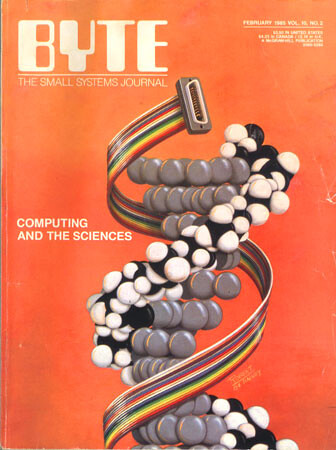

Cognitive Automation
The automation of cognitive activity is going to be a major trend of the coming age, and it marks a leap to the posthistorical dimension. In the modern humanist sense, “history” is the process of the conscious affirmation of free projects in the field of political action. But the cognitive mutation that we are talking about is going to dissolve the historical relation between consciousness, politics, and freedom. Automation is taking the place of political decision, and the word “governance” refers essentially to this automation of data interpretation and decision: it implies the end of politics, democracy, and conscious decision-making, and the establishment of an automatic chain of logical procedures intended to replace conscious voluntary choices.
As some theorists have argued (e.g., Kevin Kelly in his Out of Control: The New Biology of Machines, Social Systems, and the Economic World), the social organism is going to be transformed into a swarm, a collective organism composed of many individual bodies whose brains follow rules embedded in the nervous system of each individual. The individuals who comprise a swarm act in a coordinated way even if no centralized structure of control dictates how the individuals should behave. Cognitive automatisms act as embedded rules which lead to the emergence of a form of intelligent behavior that is not consciously performed by the individuals who take part in the swarm.
Under the present conditions of hypercomplexity—the excessive intensity and speed of the info-stimuli affecting the brain—social action is less and less the result of consciously organized choices, and more and more the result of automated chains of cognitive elaboration and social interaction.
Amidst the contemporary transformation of the human via the digital manipulation of language and life, human action is returning to a sort of theological dependence. Technolinguistic automatisms act like a posthumanist God, whose operational force is inscrutable and superior to human action and will.
Not surprisingly, the space in which the neohuman emerges is the American cultural space. Since the beginning of colonization, North American civilization was marked by the erasure of the cultural past. The cultural and religious legacy of the European past was cancelled by the Puritans’ decision to abandon the old continent, polluted as it was by religious and political corruption. The elimination of the indigenous population (the most perfect genocide ever) cleared the American space of the traces of local culture. In that territory purified of the past, the Puritans built a new civilization which was essentially based on a verbal relationship with God.
Yes or no—this is the Puritan language: no nuances, no ambiguity. (Not coincidentally, it is similar to the computational language of zero or one.) In their relation with God, Puritans did not rely on images, on impure, ill-defined representations. Only words made the relation between God and the elected people possible.
Catholics invaded the Mexican cultural scape with a flow of imagery. They founded the process of evangelization on the ambiguity of images whose interpretation is infinite and always open to semantic negotiation. The Anglo-Saxon Puritans, by contrast, laid the foundations of a binary infosphere with no ambiguity, so that every question can have only one of two answers: yes or no.
This is the epistemic and aesthetic condition of the neohuman civilization that led Western culture to create computing technology and the digital infosphere. The next step is the utopia of the final automation of intelligent life.
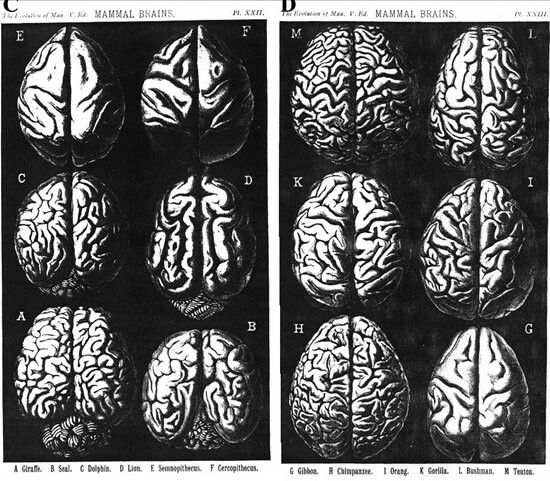

Transhumanism
According to the transhumanist vision, the reduction of every process to the informational binary will now going to give way to the emergence of a living and conscious artifact perfectly replicating human behavior.
The transhuman vision can be seen as the ideological foundation of the determinist strategy. The transhuman project is based on the automation of cognitive activity and the uploading of this automated cognitive ability to an artifact. Only by assuming that conscious behavior is the effect of a deterministic chain of causation it is possible to imagine the implementation of a technical automaton acting as a perfect replica of the human being: the android.
Not surprisingly, Ray Kurzweil—the philosopher and technofuturist who wrote the book The Singularity is Near, which proposes the concept of transhumanism—was hired by Google in 2012. He is now the director of a program called Google Brain that involves machine learning and language processing. The inscription of determinist automatisms into cognitive activity, and the consequent inscription of determinist chains into the social sphere, is the core of the Google Empire: the capture of user attention and the translation of cognitive acts into automatic sequences. The inscription of these sequences into the sphere of language and cognition at large—this is the Google methodology, based on the replacement of cognition with a chain of automated connections, aiming at the systematic fabrication of automated subjectivity.
This project implies the insertion of deterministic chains into the epigenetic process. The transhumanist project aims to narrow the space of epigenesis and to submit epigenetic events to the determination of algorithmic chains inscribed into the body and mind.
But the transhumanist project is based on a flawed idea of the human experience. Can experience be automated and reduced to chains of predictable steps? Yes and no.
Cognitive activity can be reduced to formal procedures, and these procedures can be translated into algorithms so that cognition can be replicated by an artifact and experience can be made uniform. But the human agent cannot be reduced to only his or her behavior and cognitive performances.


The transhumanist logo proposal draws out the enhanced human with a subscript plus sign.
Cognition and life can be simulated by intelligent automata, but the replica is not identifiable with the conscious and sensible organism because cognition and life are not reducible to the embedding of information into an artifact. As highly complex and refined as it may be, the construct can develop intelligent behavior, but not experience. Experience means the self-reflective deployment of consciousness in the temporal dimension. Experience (ex-perire) implies time; it implies an awareness of the temporal limit inscribed in the organism: death. There is no self if there is no consciousness of being in the flow time. The conscious organism, indeed, is not placed in the flow of time (as if time were an external dimension that the conscious organism was going through) but is the flow of time itself. Consciousness is the experience of time and the projection of time, and no artifact can embody this experience and this consciousness. We can envision the possibility of replacing direct experience of the world with a download of recorded information, but this download cannot be called “experience.”
This is the philosophical flaw in the transhuman theory. Nevertheless, transhumanist ideology and the development of automation technology are producing mutations in the conscious organism and the social body. Transhumanist theory should not to be seen as a description, but rather as a project and a strategy for the reprogramming of the human brain.
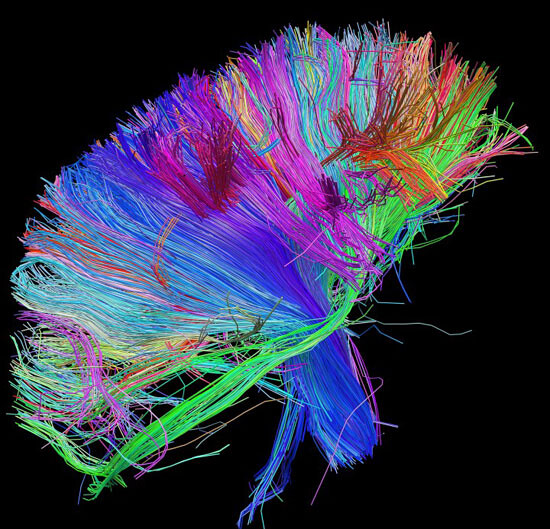

The Neuroplastic Dilemma
In 2013, President Barack Obama declared that the main scientific investment of the US in the second decade of the twenty-first century would be the Brain Activity Mapping (BAM) project, a continuation of the Human Genome Project. These projects are essentially aimed at mapping the infinite possible combinations of genetic information and neural connections. Simultaneously, they raise urgent philosophical issues: the question of determinism versus indeterminism is being restated in the fields of biomorphogenesis, neuromorphogenesis, and the generation of events at large.
The emerging concept of neuroplasticity is crucial here: the transformation of the physical conditions in which cognition operates is affecting not only psychocognitive activity, but also its neurological substratum.
In her book The New Wounded, Catherine Malabou remarks that Freud’s move from the sphere of neurology to the sphere of language and sexuality should be reversed today. If we want to explain increasingly prevalent diseases like Alzheimer’s and Parkinson’s—afflictions that result from the degradation of the material consistency of the brain—we must go back to a neurological approach. The same can be said about a wide range of new pathologies, particularly those affecting young people who have been exposed to digital flows of info-stimulation since early childhood.
The philosophical and political implications of plasticity are ambiguous. Like the concept of determinism, the concept of neuroplasticity is double-edged: it is a description of the neural system as essentially plastic, but it is also a condition for the carrying out of a strategy. If the neural system is plastic, it is possible to develop a project of neurosubjection and cognitive mutation: the Google strategy. Or, conversely, if the neural system is plastic, it is possible to develop a project of neuroemancipation from our surrounding reality.
A dilemma casts a shadow over the near future: Do we adapt our neural systems to a social and physical environment that is becoming more and more intolerable to human sensibilities? Or do we pursue the autonomous reorganization of the general intellect? The first case is already largely on display in present social behavior: thanks to the globalized media system, we are daily exposed to images of unspeakable violence, torture, humiliation, misery, displacement, and the deportation of millions of children, women, and elderly people. But we are becoming more and more capable of deactivating compassion, up to the point that mass cynicism acts like a moral anesthesia. Permanent exposure to horror deactivates our ethical sentiment. Empathy is atrophied.
But neuroplasticity can go in the opposite direction. The plasticity of our neural systems can be the condition for a fundamental reactivation of the psycho-cognitive apparatus in its social expression. Neuroplasticity can be the condition for the reactivation of empathy and political solidarity—necessary conditions for a process of self-organization of the general intellect driven by ethical and aesthetic sensibilities rather than by the an-ethical impulse of economic competition.
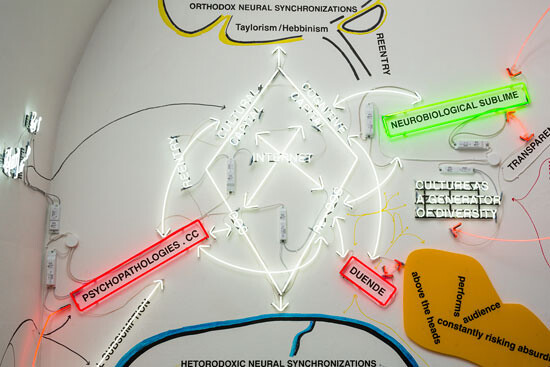

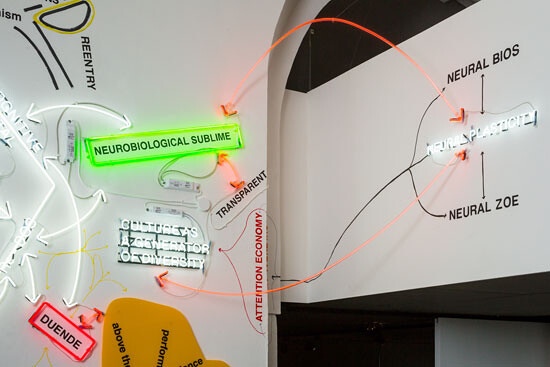

The SCEPSI Experiment
In the year 2011, together with a group of artists and activists, I created the European School for Social Imagination (SCEPSI), aimed at the creation of a platform for the autonomy of the general intellect. The SCEPSI project was intended to convert the social uprisings of 2011 into a process that would disentangle the networked activity of scientists, engineers, and artists from the political and epistemological domination of a profit-oriented economy.
SCEPSI organized three international conferences (in San Marino, Barcelona, and Kassel). The main subject was the relationship between financial power and knowledge, and the place of art in the self-organization of cognitive work.
Following the financial collapse of September 2008, the governments of Europe started a program of austerity based on the defunding of social welfare, particularly education. In 2011, I expected a wave of occupations at the universities of Europe. I expected long-lasting occupations and the beginning of the process of the self-organization of knowledge. I was wrong. I was reading the situation through the old categories of 1968. Students have totally changed, and the university has changed too. Students are no longer people who spend their time studying, discussing, and living together. They are obliged to work and to submit themselves to the blackmail of precarity. And the university has became an empty place where students go only to do their job, complete their exams. Relevant research is almost totally privatized.
Unable to endure over time, the Occupy movement vanished, overpowered by two opposing and complementary forces: the force of financial abstraction (the global chain of technolinguistic automatisms) and the force of identitarian aggressiveness (nationalism, fundamentalism, fascism).
After the uprisings, the attempt to instigate a project of self-organizing knowledge workers failed because precariousness and globalization have jeopardized the social solidarity that is needed for a long-lasting process of autonomous organization. The history of emancipatory movements has reached a turning point.
The abstract totalitarianism of finance and the aggressive identitarianism of disempowered populations are now the masters of the future. Political action will not avert this future because the expanding masses of the unemployed, precarious workers, migrants, and displaced and deported people will be swallowed up in the identitarian whirlpool.
Neuroengineering: Consciousness and Evolution
The unbridgeable gap between information (zero-dimensional and atemporal) and the body (multidimensional and evolving in time) is the condition of the interminability of the process of subsumption. The game is over, but the game is continuously opening again.
The current theoretical focus on neuroplasticity can pave the brain to adapt to an environment that grows every day more intolerable for a psychological, aesthetic, and ethical mind that was forged in a previous age of human civilization. Adaptation to the connective mode of communication, adaptation to the ferocity of competition, to the barbarity and horror of the submission of life and attention to financial abstraction, may take the form of a sort of social lobotomy: a pharmacological or surgical cancellation of what in the human psyche is incompatible with abstract domination.
But there is an alternative possibility. It lies in the conscious ability of the brain to reshape itself.
In order to conceptualize the shift from the past forms of political action—now devoid of effectiveness—to the evolutionary horizon of conscious neuro-evolution, a preliminary question has to be answered: What is the relationship between consciousness and evolution? Can we envisage a nondeterministic adaptation to neuroplastic evolution? Can we consciously govern this neuro-evolution?
In order to answer this question, we should focus on the relationship between aesthetic sensibility and the epistemic foundation of social action. Then we should focus on the creation of a platform (social, cultural, institutional, artistic, neuroengineering) for the self-organization of the general intellect and the recomposition of the networked activity of millions of cognitive workers worldwide, who must get reacquainted with their social, erotic, and poetic body.
We must walk this territory where technology meets epistemology, psychopathology meets poetry, and neurobiology meets cultural evolution.

